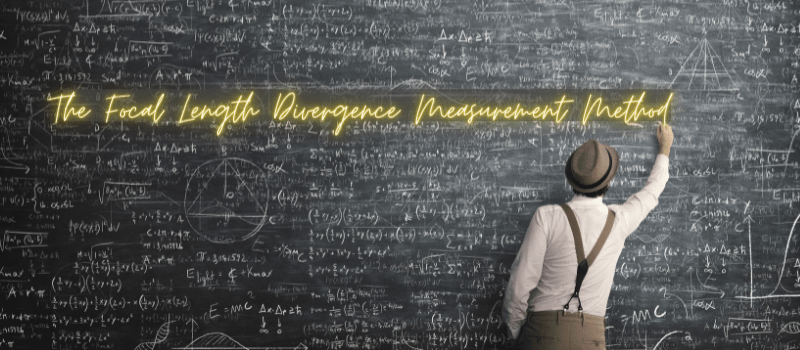A clear benefit of knowing the M-Squared of your laser is getting a lot of information about beam quality all in one number.
As simple as the output is, it is harder than you may imagine measuring and calculate M-Squared.
Let’s take a quick look at the theory behind M2 to see how it can be measured.
What is M2
Here’s a picture of a beam propagating from left to right.
The formula for M2 is:
[math]M^2=W_0Thetafrac{pi}{4 lambda},[/math]
where W0 is the beam diameter, θ is the divergence, and λ is the laser wavelength.
Assuming we all know π (to a few digits, at least), and the laser’s wavelength, that leaves just beam diameter and divergence, both of which are indicated in the diagram above.
Measuring M2 – Theoretically
So, measure divergence and beam diameter and we can calculate M2, right?
Not exactly.
First of all, how do you measure divergence?
Typically, this is done by simple measuring the beam width in a few spots, then fitting these measurements to a beam propagation curve.
That’s fine, but the real issue is that we need beam measurements before and after the waist, not just anywhere along the beam path. This can be difficult – or even impossible. For instance, what if the beam waist is not accessible, or it’s somewhere inside the laser cavity? What if the waist is behind the laser, in virtual space?
Furthermore, many lasers are highly collimated, so we would need to make measurements meters away to see the curvature of the beam.
Measuring M2 – Actually
Practically, it is usually necessary to create an artificial beam waist with a lens.
Here’s what the whole picture looks like:
W01 is the original beam waist of the laser, be it real or otherwise.
Notice that it’s important to keep some space between the first beam waist and the lens of the BeamSquared system. This should be at least the focal length of the lens but check the manual for further instructions.
Ophir BeamSquared measurement systems measure W02 at several positions (usually five in the near field and five in the far field). With the tighter beam caustic created by our lens, this is now much more feasible.
M2 Measurement – Choices
This last step is not actually as simple as it sounds – what’s the best way to measure beam width at several places? (Move the camera or the laser?) There are a few options, but for that we’ll have to wait for the next M2 post.
To be continued…












Leave a Reply
Your email address will not be published. Required fields are marked *